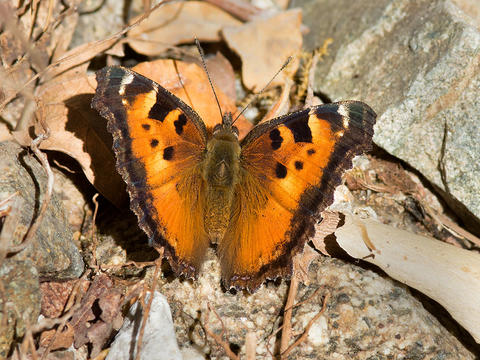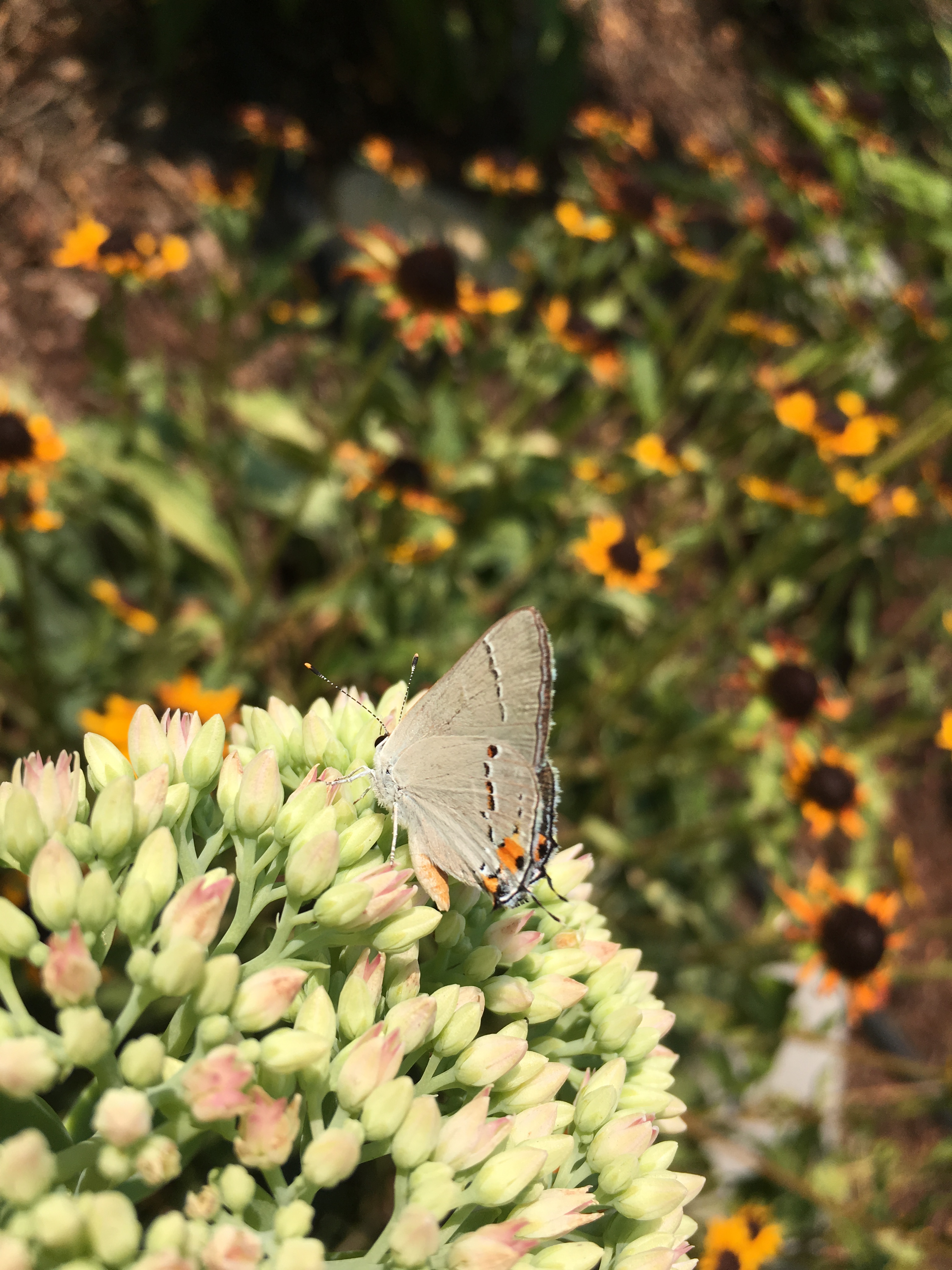This entry is from Isabella Messer, an undergraduate horticulture student at Oregon State University. It highlights a common Oregon pollinator.
Despite the misleading name, we have unfortunately not discovered a new cross species between California butterflies and tortoiseshell cats. Even though this butterfly has a larval stage instead of a kitten stage, the California Tortoiseshell Butterfly is still a beautiful representative of the Lepidoptera.

As you may be able to guess, the largest populations of the California Tortoiseshell (Nymphalis californica (Boisduval, 1852)) are located across California(1). While the majority may be in California, the California Tortoiseshell habitat range stretches south from British Columbia to Mexico and east from California to Wyoming(1). When the California Tortoiseshells experience a population explosion in the summer(1), some populations have been known to travel as far east as Vermont, New York and Pennsylvania(2).
These lovely butterflies can be identified by their bright orange upperwing which features black spots and black border(1). Their underwings are mottled brown and gray and resemble dead leaves(2). When in larval(caterpillar) form, N. californica can be identified by its all-black appearance with the exception of a white line running down its back and the slight blue at the base of its black spines(2).

Unlike some of the other pollinators that we have discussed over the months, the California Tortoiseshell Butterfly is somewhat picky when it comes to choice of host plant for the immature and habitat mature butterflies. Adults will oviposit (lay eggs) only on various species of wild lilac (Ceanothus) where the immature butterflies will be hosted until they reach maturity(3). Adult N. californica are less specific about their habitats by the time the reach maturity. They can generally be found in mountainous regions in chaparral, woodland and brush areas(1).
While these charming butterflies may not be extremely common in the Portland area due to its low elevation, if you take a trip up to Mount Hood this coming summer, it is more than likely you will run into one of these beauties.
Sources:
- Lotts, Kelly and Thomas Naberhaus, et al. “California Tortoiseshell”. Butterflies and Moths of North America. 2017. Butterflies and Moths of North America. http://www.butterfliesandmoths.org/
- Ross A. Layberry, Peter W. Hall, and J. Donald Lafontaine. “California Tortoiseshell”. Canadian Biodiversity Information Facility. 9 Jul. 2014. http://www.cbif.gc.ca/eng/species-bank/butterflies-of-canada/california-tortoiseshell/?id=1370403265564
- Art Shapiro. “Nymphalis californica”. Art Shapiro’s Butterfly Site. http://butterfly.ucdavis.edu/butterfly/Nymphalis/californica




